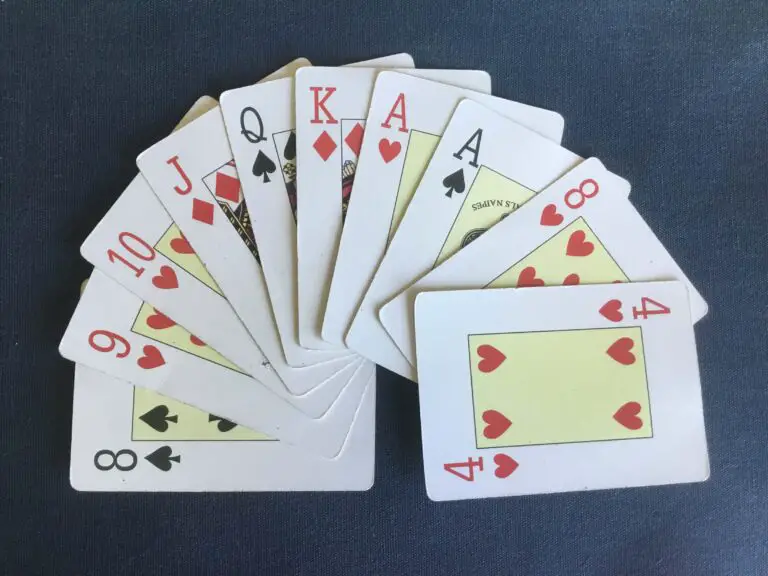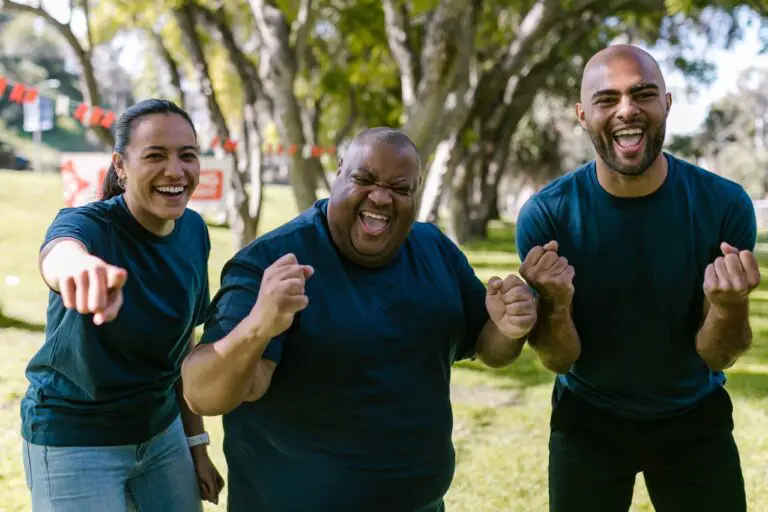Tired of worksheets and grammar exercises? Want to spice up your intermediate EFL/ESL classes with a few effective games and activities? Look no further. I’ve got 9 fantastic ideas, all of which are tried and tested to great success in my own lessons.

Intermediate learners are at that special point where they’re confident enough to string multiple sentences together, but still need to talk a lot to get full fluency.
They’re also able to write to a good degree, as well as listen to more complex instructions.
If you think your students aren’t there yet, check out my 9 EFL/ESL Speaking Games & Activities Perfect for Beginners.
Let’s get straight into it. Here are my top games and activities for intermediate learners.
- Two Truths and a Lie
- Blindfold directions
- Advanced bingo
- Folding stories
- Jeopardy
- What Are You Doing?
- Fortune teller
- Who am I? (or 20 Questions)
- Most Likely
The 9 games on this list are just the beginning. You can get your hands on my free ebook of 20 EFL/ESL games with detailed instructions and adaptations for online lessons, private tutoring, big groups and individuals of all ages and abilities by signing up to the Enchanted ESL Newsletter.
On top of the free ebook, you’ll also get access to lots of other exlusive resources and receive monthly emails full of role-play scenarios, lesson plans and even more games. All absolutely free!
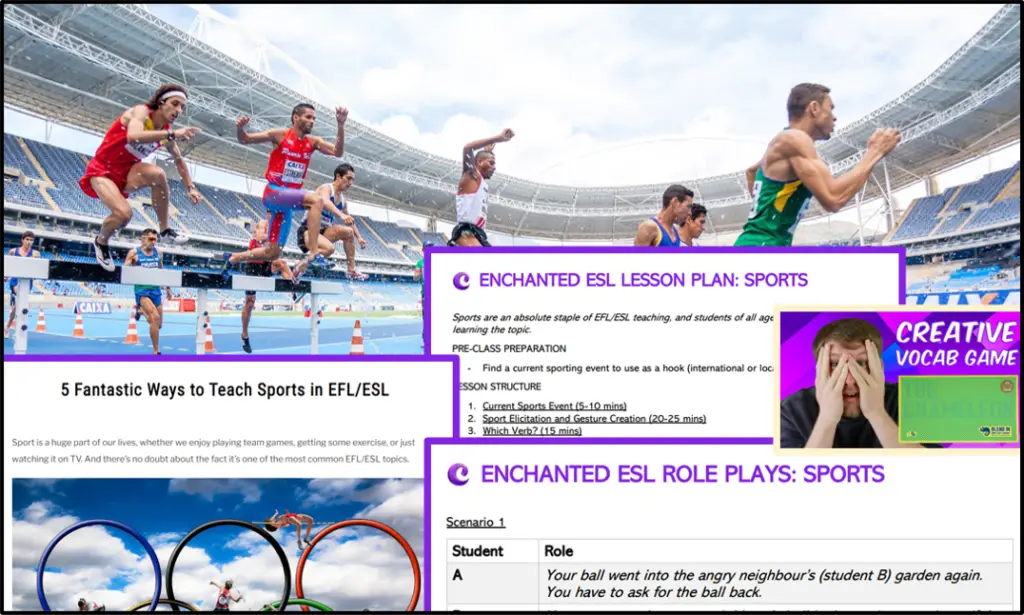
Enchanted ESL Resource Trove
- Lesson plans
- Role-play scenarios
- Printable game materials
- 20 ESL Games eBook
- Monthly newsletters with more free stuff!
1. Two Truths and a Lie
Two Truths and a Lie is a simple game which practices writing, speaking, and listening.
Estimated time: 10-15 minutes per round
Energy level: 2/5
Materials: Writing materials

You can play this game with any group size, but with bigger classes, you may want to split them up to make sure everyone gets a go, and to make keeping track of points easier. An optimal group size is 5-8. Over 15 is too much.
How to play
Each player writes 3 sentences about themselves. Two of the sentences are true, and one is a lie.
In turn, they reveal the sentences and the other players vote on which is the lie.
If a player chooses correctly (picks the lie), they get one point. The player who wrote the sentences gets a point for every player who voted incorrectly.
Play continues until everyone has had their turn. Whoever has the most points wins.
TIPS:
- Warn students not to include information that is too personal.
- Encourage players to think outside the box with their sentences rather than going for basic ones.
- Join in yourself! This game helps get to know your students, and they’ll enjoy learning about you, too.
- A variation of the game is to allow any sentences to be written, not just personal things.
2. Blindfold directions
This is a lot of fun and really challenges students to be precise with their language.
Estimated time: 5 minutes per round
Energy level: 4/5
Materials: Blindfold
As well as a blindfold, you’ll need an assortment of other objects, but nothing specific. Pens, erasers, boxes, etc. will do. Whatever you have available.

If you don’t have a blindfold handy, improvise one. Ideally, have a separate blindfold for each student, for hygiene reasons.
How to play
One player puts on the blindfold. Gently spin them around so they don’t know which direction they’re facing.
Now, place some objects around the room. The blindfolded player must find the items and bring them back to the table, guided by the other players directions.
WARNING: There’s a risk of the blindfolded player getting hurt in this activity, so be alert and stop things that look dangerous. Encourage the blindfolded player to move slowly and carefully.
TIPS:
- Play in small groups. Having more than 2 or 3 voices giving instructions at one time will create chaos.
- Change what the blindfolded player has to do. Challenge them to find a pen and draw a picture on the whiteboard, or instead of collecting things, have them take objects to certain locations in the room.
- Pre-teach words like “go forward”, “turn left”, “crouch down”, etc.
3. Advanced bingo
Bingo is an EFL/ESL teacher’s favourite. It’s easy, low-prep and students love playing it, especially kids. But did you know there are ways to make it even better?
Estimated time: 10 minutes per round
Energy level: 3/5
Materials: Writing materials (optional: prepared 3×3 grids with vocabulary)
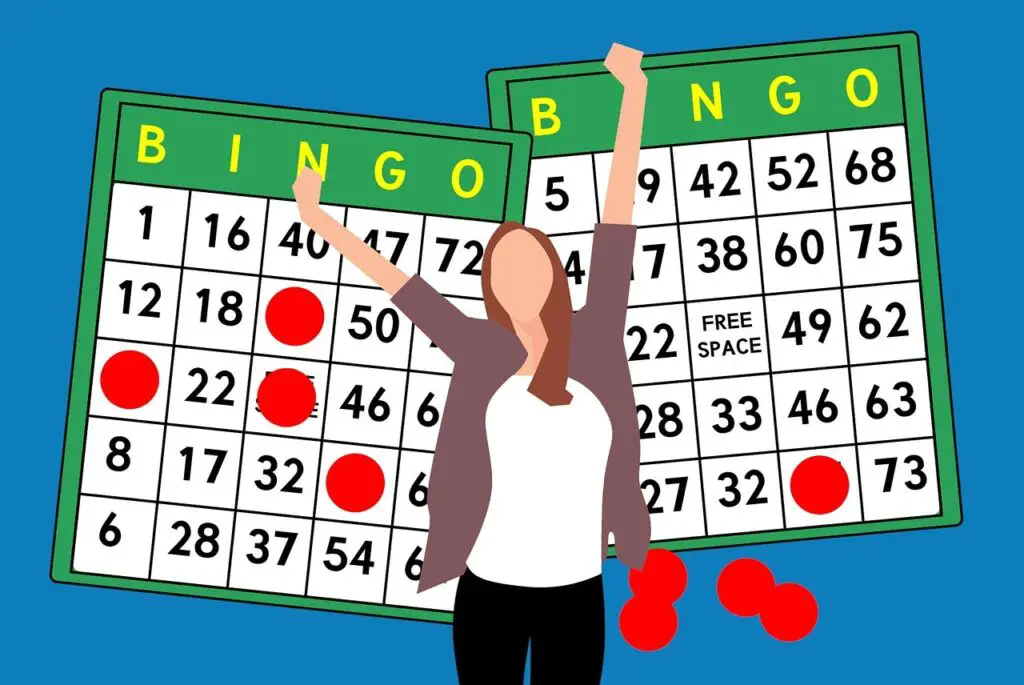
Here are the rules for a basic EFL/ESL bingo game, and below I’ll explain some variations.
How to play
Have players draw a 3×3 grid and write numbers from 1 to 40 in the boxes.
Call out the numbers randomly, with students ticking off the ones they have.
First person to get all 9 numbers shouts “bingo!”
Check their numbers. If they’re all correct, they win.
You could definitely play this with beginner students, but you can change it to challenge your intermediate learners.
- Use higher numbers. Pick a range of about 40 numbers, e.g. 60-100.
- Use 6 digit numbers like 645,821. If they have a number in the correct place value position, they can check it off, so if you called out “five thousand”, they could check off the number 645,821 because it has a 5 in the thousands column.
- Use vocabulary. Prepare 3×3 grids, or write a load of words on the board for students to choose from. Even better, do a brainstorm elicitation activity to get the words on the board. (for more on elicitation, read my article: How to Elicit Vocabulary in EFL/ESL: 7 Effective Activities).
- Have students choose the numbers (or words) instead of the teacher.
- Use larger grids, like 4×4 or even 5×5, for a longer session. You can include row and column bingos, too.
4. Folding stories
A favourite in my classes. Folding stories allow students to practice a little writing, be creative, and have a laugh.
Estimated time: 10-15 minutes per round
Energy level: 2/5
Materials: Blank A4 paper and writing materials
This works best in groups of 3-6, but there’s no real upper limit.
How to play
Give everyone a blank piece of A4 paper and something to write with.
At the top of the paper, they should all write “Who:” and then the name of a person. Fictional characters are allowed.
Now, they neatly fold the top of the paper so it covers what they have written, and pass it to the student to their left.
Without looking at what the previous person wrote, they now write “Where:” and come up with a location. Fold and pass it to the left again.
This process continues with “When”, “What” (the action they were doing), “Why”, and “With who”.
Once that’s done, they can unfold the paper and read the stories.
The stories created are often nonsensical, but many of them are hilarious.
TIPS:
- Join in yourself and add some new phrases, vocabulary and creative ideas
- Encourage students to be specific about what they put. At school is fine, but could they write under the teacher’s table or on the roof of the gym?
- Switch up the prompts to suit your students. For example, add in a “How:” if you’re practicing adverbs.
If you think the games in this list are good, wait until you see the ones in my free eBook: 20 ESL Games by Enchanted ESL. All the games in there are suitable for intermediate students, and I’ve included loads of ways you can adapt them to your needs.
20 ESL Games by Enchanted ESL
- Detailed instructions & advice
- All ability levels
- In-person and online
- Individuals, small groups and large classes
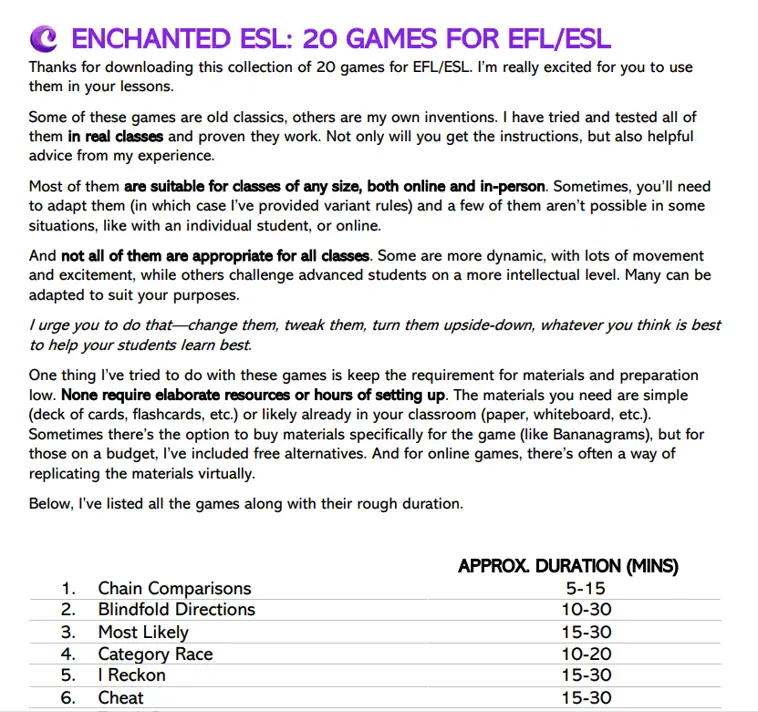
5. Jeopardy
A good quiz game with flexibility to target specific learning outcomes.

Estimated time: 30-40 minutes
Energy level: 3/5
Materials: Jeopardy scorecard and questions, writing materials
There’s a little prep for this one – you need a jeopardy scorecard and some pre-prepared questions. Luckily for you, I’ve done that work already, just click to download.
The game works best with 2-4 players/teams, so arrange your class accordingly
How to play
Decide which player/team goes first (coin toss, rock paper scissors, etc.)
The first player/team chooses a question they want to answer. They have to decide which type of question (e.g. spelling, name three, etc.) from the scorecard, and the value of the question.
If they choose a higher value, the question will be more difficult, but they’ll win more money.
If they’re playing as a team, they should nominate a spokesperson each time who’s going to say the final answer to the question, but they can all discuss together.
If they answer correctly, write their name (have teams come up with a fun team name) in the corresponding scorecard box. If they get it wrong, DON’T tell them the answer. Instead, write a reminder of the question in the box so they (or another player/team) can answer it later.
Now it’s the other player/team’s turn. They follow the same steps as above. They may answer any questions that have previously been answered incorrectly.
When the score card is complete (or you run out of time), count up the amount of money each team has won. Most money wins.
TIPS:
- Change the question types and adapt questions to what you’re learning in class.
- Use different colours to represent players/teams.
- Put a time limit on answering the question to speed things up.
6. What Are You Doing?
A nice quick activity to practice present continuous or past continuous (what were you doing?)
Estimated time: 10-15 minutes
Energy level: 4/5
Materials: None

How to play
Choose 3-4 students to be the actors, and the rest are the guessers.
Guessers close their eyes while the actors mime doing an action e.g. sleeping, playing basketball, drinking water.
Shout “STOP!” and the actors have to freeze mid-action. The guessers open their eyes and try to guess what the actors are doing (or were doing) using full sentences.
For example, “Fatima is riding a bike.”
Once they’ve all been guessed, change the actors and repeat.
There’s no competitive element to this activity – it’s just a bit of fun practice.
TIPS:
- Encourage actors to team up to do actions so you get sentences like “they are playing tennis.”
- Narrow down the possible actions if you’re practicing specific vocab, like sports.
- Get involved yourself (as an actor) and introduce some new words/phrases like “stretching” or “hopping”.
7. Fortune teller
This is a great way to practice the “will” future tenses.
Estimated time: 20-30 minutes
Energy level: 2/5
Materials: Paper, scissors, writing materials
You may want some small boxes or hats to keep the four piles separate.
How to play
Cut out plenty of small strips of paper, big enough to write 3-4 words on.
Divide them into four piles. For the first pile, write a future time, e.g. in ten minutes, or next year. Fold each paper strip in half twice. For the other piles, do the same, but with a person, an action, and an object.
In turn, each player takes one folded strip of paper from each pile and creates a sentence. Let’s say they get: Next year, the Queen of England, play football, and tomato.
The players then make a sentence using the “will” future: Next year, the Queen of England will play football with a tomato.
Similarly to the folding stories activity above, you can come up with some very funny predictions.
TIPS:
- Get your students to help write the words on the paper for some writing practice.
- Adapt the words to suit what you’re learning in class.
- Add extra piles for other word types, e.g. adverbs.
- Help your students make sense of some sentences, as they won’t all immediately make sense.
Who am I? (or 20 Questions)
An oldie, but a goodie. Fantastic for asking questions, and you can modify it to target specific vocabulary.
Estimated time: 20-30 minutes
Energy level: 3/5
Materials: Paper squares (or post-it notes), writing materials
How to play
Each player secretly writes the name of a person/character on a piece of paper. These are then passed to the left, and the player receiving should NOT look at the name. Instead, they should place it on their forehead for everyone to see.
Now players ask yes/no questions to determine who they are.

It’s hardly revolutionary, but it works a treat. It can get tricky with larger classes, so either have one student go at a time at the front of the class, or divide them all into smaller groups.
TIPS:
- To help hold the paper on their heads, you can have students make a paper halo which sits on top and won’t fall off.
- Depending on your students, either have one person ask all their questions at the same time, or go around a circle asking one question on each turn.
- Instead of people, change it to vocabulary you’re studying, e.g. sports, or transport.
- Don’t make it a competition – students WILL cheat if there’s a prize for guessing their person first.
- If you’re worried about cheating, don’t let them have the piece of paper. Instead, have the person who wrote the word show it to everyone else then keep it hidden.
9. Most Likely
This is a good one for students aged ten or above, as they have the maturity to express the reasons why they made their decisions.
Estimated time: 10-30 minutes
Energy level: 3/5
Materials: Writing materials
How to play
Ask a question to the class starting with “Who is most likely to…”
For example, “Who is most likely to become a famous singer?“
All the students write who they think is most likely. Then they all show their answers and you calculate who got the most votes (there are no prizes for getting the most).
Ask some students to explain why they voted the way they did.
This game only works with the right group of people. Since it’s discussing different personalities in the class, beware of things getting nasty and students feeling uncomfortable. For that reason, I usually limit this game to small groups where there’s plenty of trust.
TIPS:
- Have your students come up with the questions.
- Keep questions clean and respectful.
- Don’t award points for getting more votes, or treat it like a competition. Ensure everyone knows it’s just a bit of fun.

Modify and innovate
You can adapt all 9 games and activities on this list to suit the needs of your class.
You know what will work best. Take the ideas, modify them, and develop your own way of implementing them. Who knows, you may come up with brand new games, which I’d love to hear about!
For more detailed instructions and guidance for adapting games to all situations, get my ebook of 20 EFL/ESL games for free by signing up to the Enchanted ESL Newsletter. You’ll also get more exclusive resources and monthly emails with role-play scenarios, lesson plans and even more games!

Enchanted ESL Resource Trove
- Lesson plans
- Role-play scenarios
- Printable game materials
- 20 ESL Games eBook
- Monthly newsletters with more free stuff!
If you’re looking for more games and activities, check out my other lists:
9 EFL/ESL Speaking Games & Activities Perfect for Beginners
9 EFL/ESL Games & Activities for Intermediate Learners
9 EFL/ESL Games and Activities for Advanced Learners
9 High Energy EFL/ESL Games for Boosting Vocabulary
9 Engaging Homework Ideas for EFL/ESL: No worksheets!
9 Exciting EFL/ESL Activities for Writing & Spelling
9 Fun EFL/ESL Games & Ideas With Standard Playing Cards
9 EFL/ESL Games With No Materials or Preparation Needed
9 EFL/ESL 5 Minute Games Every Teacher Needs to Know
9 Superb EFL/ESL Games & Activities Using Just Pen & Paper
9 Classy EFL/ESL Games & Activities for Adults (+ tips)
9 Confidence-Boosting EFL/ESL Speaking Games for All Levels
9 Exciting Flashcard Games for EFL/ESL Classes



